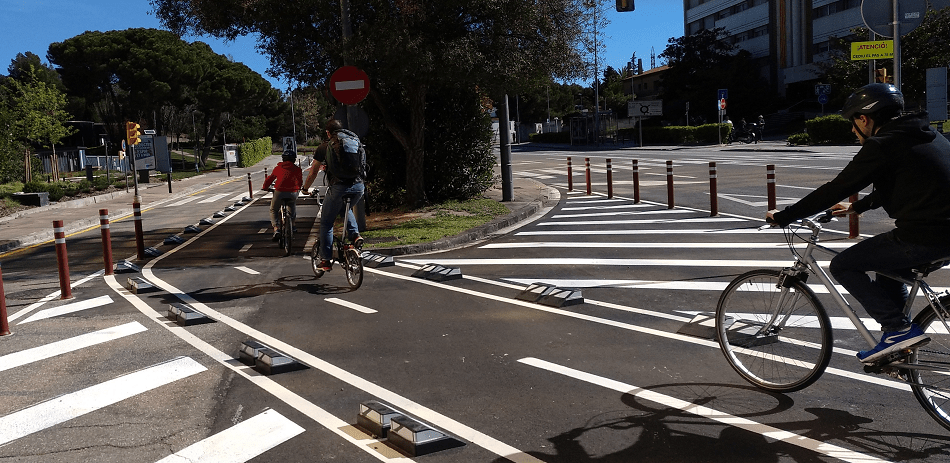The bicycle and the sustainable mobility.
Due to the population increase, the urban traffic and the severe pollution challenges we are facing nowadays the sustainable mobility, in which the bike is a key factor and must be one of the milestones in the agendas of our cities.
The forecast is that by 2030 there would be 8,5 billion people in the world, and by 2050 9,7 billion. The super population is a planetary emergency, and requires the development of alternative mobility modes, which must be more sustainable and must avoid using fossil fuels.
If we do not begin to think about a solution to this problem, the concentration of carbon dioxide in the atmosphere will reach 450 parts per million (ppm), this means that the global temperature will increase an average of 2ºC.
Consequently, some of the big cities in the world, hosting more than 275 millions of people, will be submerged in the sea.
Due to this scenario, cities are beginning to develop sustainable mobility plans, where the bike has a leading role.
The quality of the bike infrastructures.
The matter is not only to increase the existing bike infrastructure, but to make it more attractive in order to encourage the citizens to use it. One of the ways to create a more attractive bike infrastructure is by constructing segregated bike lanes.
As it has been established in the mobility plan of the city of Barcelona for 2013-2018, the city is moving towards a safer, more sustainable, equitable and efficient mobility, which must allow the citizens to go to work by bicycle and to make the city a healthy and a kind place to live in.
The bicycle is beginning to have a leading role in Barcelona, that is why the City Council is working in order to improve the quality of the bike lane network. To make it safer and to guarantee a good coexistence among the different road users.
For that reason, they are creating:
- Unidirectional bike lanes.
- Bike lanes on the road and not on the sidewalk.
- Exclusive crossroads for bicycles.
- Advanced areas in order to make it easier to turn in the traffic lights.
- Improved signalling.
- New parking systems as segregation between bike lanes and motorized vehicles.
- Improved public bike share system.
- Etc.




0 Comments